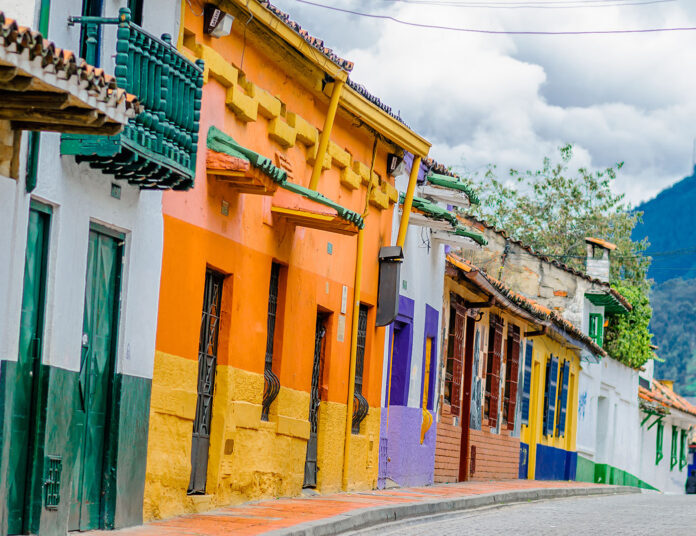
Cannabis opportunity is not new in the Republic of Colombia. The South American country, which boasts a population just north of 50 million, has a long-running association with the plant.
Like the Golden Triangle in Mexico, Colombia has the perfect climate to grow more than just marijuana. Most Gen Xers and Baby Boomers are well aware of the country’s reputation for illegal drugs dating back to the 1970s. Colombia was the number one global producer of cocaine from the mid- to late-’90s and also gained a reputation as a major exporter of heroin during the period.
Colombia’s reputation as unstable was perpetuated by political and social unrest over the years. We saw the M-19 guerillas storm the government in 1985, three presidential candidates murdered by drug cartels in 1990 and, more recently, the continuing drama surrounding the late, notorious cocaine baron Pablo Escobar. For decades, all of this cast a dark cloud over an otherwise lush and beautiful country, posing a true challenge for citizens and the government to overcome.
New mindset
Thankfully, Colombia’s mindset about cannabis shifted in the mid-1990s. In 1994, less than a year after Escobar’s death at the hands of the National Police of Colombia, the country’s Constitutional Court ruled possession of cannabis (and other drugs in small amounts) legal for personal use. This is similar to Mexico’s Supreme Court ruling an absolute ban on recreational marijuana use unconstitutional. The news was not taken well by the United States government, which at the time remained fully committed to the failing war on drugs initiated during the Nixon era. Cannabis still sits atop the Drug Enforcement Agency’s list of Schedule I narcotics, along with ecstasy, heroin, LSD, and peyote.
As recently as 2000, the U.S. approved a $1.3-billion aid package to help eradicate the production of coca and poppy plants in Colombia. A small portion of the investment went to operation Plan Colombia, which allocated $68.5 million to farmers to help flip illicit drug crops to coffee, sugar, and bananas. But the investment pales in comparison to the $519 million allocated to military aid in the region, including means for direct eradication.
While these efforts were centered primarily on cocaine and opium production, they also spilled over into cannabis eradication. Much of the combat was accomplished with herbicides that easily washed away, allowing farmers to replant. Officials then began using Agent Orange, specifically Monsanto’s glyphosate (aka Roundup). While the end results were attractive to the U.S. at the time, the activity rendered countless hectares of land useless for growing now-legal cannabis. Why? Cannabis is a phytoremediator, which absorbs heavy metals and contaminants from “root to shoot.”
Fully detailed decriminalization of cannabis came about in 2012, including a segue to legal cannabis production. On July 6, 2016, the Congress of the Republic of Colombia approved law 1787, which established a regulatory framework that allows safe access for the medical and scientific use of cannabis. The recent shift in how Colombia approaches and embraces cannabis has set a completely new tone and appreciation for the country’s potential as a global powerhouse. This did not go unnoticed by capital-fueled Canadian licensed producers.
Evolving laws
The very first cultivation license was issued in 2017, with both Colombian and Canadian companies itching to start growing in the ideal climate. With costs of production as low as five cents per gram, it’s no wonder excitement was extremely high at the time. Even factoring in the logistics of shipping products back to the Great White North, the cost was pennies on the dollar compared to growing plants in the very strictly regulated Canadian market.
However, many were not aware of one critical aspect of Colombian cannabis production on the export side. Until July 23, 2021, Colombia disallowed exportation of dry flower. You read that right: From 2017 until the middle of 2021, only extracts could leave Colombian soil. Many exported products were CBD-infused balms, oils, and topicals shipped to U.S., British, and Australian markets. The total value of the market was about U.S. $5 million as of October 2020. President Ivan Duque estimated Latin American cannabis exports could be worth up to U.S. $6 billion. With Colombia’s geographical location and climate, I agree.
Of all current legal sovereign states in South America, Colombia arguably is leading the pack in exportation opportunity. Although Paraguay is currently the region’s largest producer, that could change quickly considering Colombia’s recent shift to allow flower exportation. But the Most Cannabis-Friendly award still goes to Uruguay, which, after all, was the first country in the world to legalize the plant.
Ironically, the first legal cannabis farms in Colombia arose just outside Medellín, the country’s second-largest city. Located in the Aburrá Valley, a central region of the Andes Mountains with an ideal climate for growing cannabis outdoors year-round, Medellín is the very place Escobar began his trafficking empire by transporting marijuana northward in the 1970s, long before he became the most infamous—and wealthiest—cocaine baron in the world.
Colombia has had a bumpy ride but has come a long way. The future looks bright for this special country.

Lance C. Lambert has spent years cultivating brands and telling stories, primarily in the mainstream digital media and marketing space prior to making the jump to the legal cannabis industry in late 2013. In 2021, he planted his knowledge and passion-first attitude at GreenBroz, where he’s tasked with growing the company’s footprint at home and in emerging markets around the globe.








